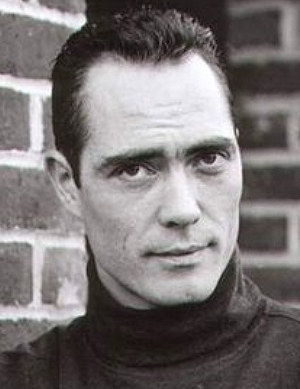The story of Tomb Raider II surrounds the mythical 'Dagger of Xian', a weapon which was used by an Emperor of China to command his army. By plunging the weapon into its owner's heart, the weapon has the power to turn its bearer into a dragon. A flashback reveals that the last battle which was fought with the Dagger ended in defeat when the warrior monks of Tibet succeeded in removing the knife from the Emperor's heart, whereupon the Emperor died. The Dagger was then returned to its resting place within the Great Wall.
The game begins in the present day near the remains of the Great Wall, where Lara Croft investigates the legend of the Dagger. Upon reaching the door which leads to the dagger, she is attacked by a thug who claims to work for Marco Bartoli, a Venetian Mafia leader who has an obsession with the ancient lore of the Dagger. After travelling to Venice, Lara makes her way through Bartoli's hideout and an opera house where Bartoli's men are plotting a heist. Lara manages to follow Bartoli aboard his airplane, but she is knocked unconscious before she can confront him.
The plane is headed toward an oil platform. At the site, the cult of Xian have killed all the rig's staff, dumping the bodies into the sea and are carrying out excavations on a sunken ship called the Maria Doria, a luxury ocean liner which was owned by Marco's Father that sank two years ago. When Lara regains consciousness, she learns that the crew have taken her weapons and equipment. She retrieves her weapons and makes her way through the oil rig. She later learns from an imprisoned Tibetan monk, Brother Chan, that the shipwreck carries an ancient Tibetan artifact called the Seraph. Lara dives alongside a submersible and arrives at the shipwreck. There she successfully retrieves the Seraph. Having obtained this, she heads towards the monastery via airplane.
As Lara heads to the Tibetan monastery the plane suffers engine failure and crash lands. As the plane is skidding along the ground she manages to escape using a parachute and arrives at the Barkhang Monastery in Tibet. There she is helped by monks in confronting the thugs of Marco Bartoli. With the help of the monks, she finds and uses five prayer wheels to open a door that leads to a room to hold the Seraph. She continues her journey inside the catacombs to find the Talion, a key used to open the door which leads to the dagger. After confronting several yetis, she recovers the Talion. The FMV cutscene shows Lara exiting the caves. She takes off in a jeep while a guard is patrolling outside. Another jeep with two guards follows Lara, but she manages to escape.
Back in China, Lara opens the door to the chamber holding the Dagger. Before she reaches the artifact, however, Lara is plunged into the catacombs beneath the Great Wall. She makes her way back to the chamber too late, as Bartoli has already used the dagger and is carried through a portal to another realm. Lara goes through the portal to a place with green floating islands and warriors which come alive when triggered. She finally moves to the room where she witnesses Bartoli, transformed into a dragon. In the final fight, Lara manages to temporarily render the creature unconscious and pulls the dagger from Bartoli's heart. Soon after this, the whole tomb begins to collapse, and a part of the Great Wall is destroyed. In the epilogue, Lara returns home and is shown cleaning the dagger when she hears an alarm going off. She discovers the remainder of Marco Bartoli's men have tracked her down to England and are planning to invade her mansion. Luckily she overpowers them. The final shot is of Lara, disrobing before entering the shower. She breaks the fourth wall as she turns to the camera and says: "Don't you think you've seen enough?" She then blasts her shotgun at the camera.
Development of Tomb Raider II was already in its conceptual stages before the first game was released. As Core Design came to the home stretch of Tomb Raider's development, additional ideas and suggestions for the game had piled up, some of which were still able to be incorporated in the first game, and others which would form foundation for the sequel.
While two key members of the original team had left – most notably Lara's creator Toby Gard, who was replaced by Stuart Atkinson – the design team for Tomb Raider II was expanded to more than double its original size. A decision was made early on to keep the engine from the first Tomb Raider, adopting a tweak-and-improve approach, rather than starting over from scratch. This, combined with the larger development team, led to a shorter development time than that of the original game. Minor camera issues and polygon glitches were fixed, while new features were added, such as dynamic lighting and a more flexible control system. With the improvements to the graphics engine, a larger number of polygons could be rendered on screen, allowing large outdoors areas and more atmospheric effects.
Lara's appearance in Tomb Raider II was given a make-over by the new designer, Stuart Atkinson, giving her a free-flowing ponytail, smoother features, and several new outfits which changed over the course of the game. While in China and Venice she sported her signature "Tomb Raider outfit" (a tanktop and shorts), in the ocean-based levels she donned a half-body wetsuit and in Tibet she wore a flight jacket. Lara's revolving wardrobe would become a trademark of the series going forward.
Shelley Blond did not reprise her role as Lara Croft from the previous game. Instead, Judith Gibbins voiced Lara in Tomb Raider II.
The game was developed in Derby, England by Core Design and Published by Eidos Interactive featuring Lara Croft the female British archaeologist created by Toby Gard.



